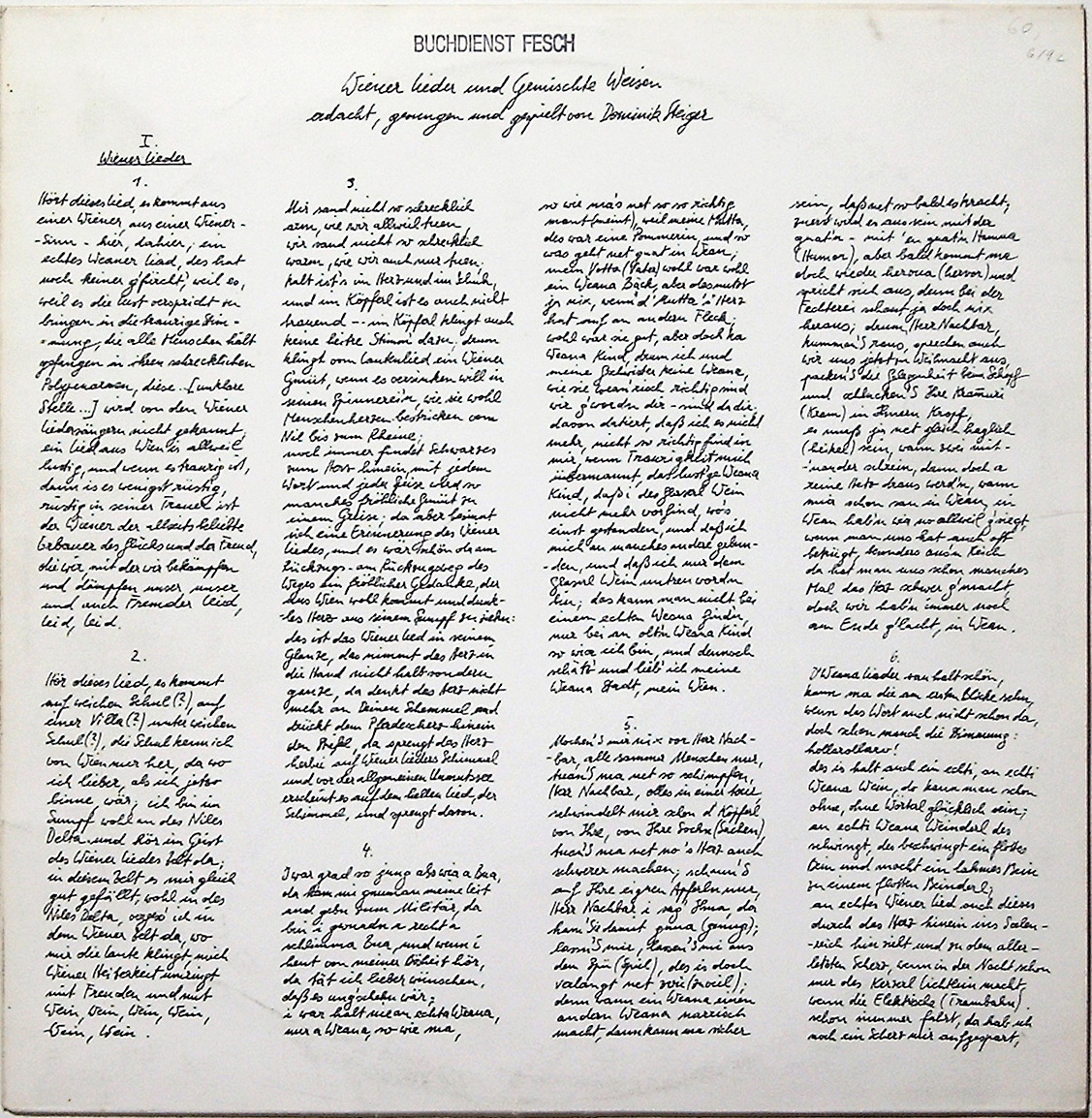
Title of the album: Wiener Lieder und Gemischte Weisen
Title: - (Track 01)
Publisher: Dieter Roth's Verlag, Stuttgart
Date: 1979
Medium: record 30 cm
Edition: 300
Cover: D. Steiger
The first song of the collection, Wiener Lieder und gemischte Weisen with compositions thought up, sung and played by Dominik Steiger, can be heard. The LP, which contains eight Viennese songs and nine mixed variations, was published by Dieter Roth's Verlag in 1979.
According to Thomas Mießgang, the songs do not aim for punchlines but a chaotic reading of meaning with the active assistance of the unconscious and literary association techniques. For example, the first song begins with the lines:
„Hört dieses Lied, es kommt aus / einer Wiener, aus einer Wiener – / – Sinn – hier, daher; ein / echtes Weaner Liad, des hat / noch keiner g’fürcht’, weil es, / weil es die Lust verspricht zu / bringen in die traurige Stim- / mung, die alle Menschen hält / gefangen in ihren schrecklichen / Polypenarmen“ . . . ("Listen to this song, it comes from / a Viennese, from a Viennese - / - sense - here, therefore; a / genuine Viennese song, that has / no one yet feared, because it, / because it promises to / bring pleasure into the sad mood that keeps all people / imprisoned in their terrible / polyp arms" . . .)
The lines do not rhyme and have no rhythm; they appear like articulated processes of consciousness. Steiger usually accompanied his songs with only one instrument, a guitar, an accordion or a Bontempi organ. The instruments do not actually provide harmonic and rhythmic support for the singing but rather an additional musical commentary. The songs, embellished with false tones and atonal sound traces, are reminiscent of a 'knowing' naivety in their aesthetics.
Dominik Steiger's songs do not appear as finished creations. But as the writer Ferdinand Schmatz writes, as manifestations "against the rapidly approved of the uniform language". According to the Germanist Thomas Mießgang, Dominik Steiger's "bisserl Lied" aims to liberate screwed-up automatisms from their classifications. In this context, the art theorist Christine Heidemann states "that the idea that formally everything is possible [...] is more widespread than ever, and very often [...] the mastery of a technique is subordinate to the subject being worked on. The lack of technical perfectionism is perfected."
ATJ